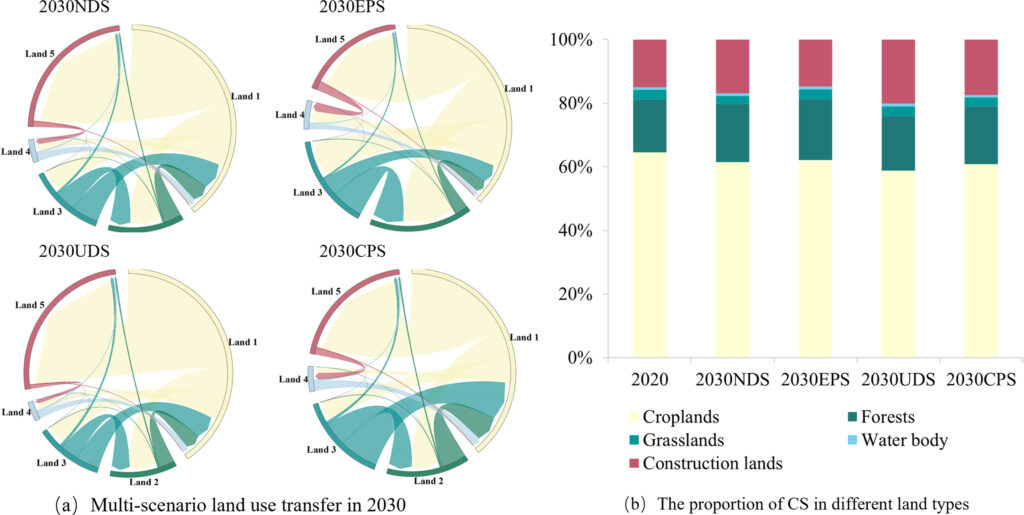Rev. Bras. Ciênc. Solo.2025;49:e0250004.
Carbon storage response to land use changes under multi-scenario simulations in the Jinan Metropolitan area, in China
06/Nov/2025
DOI: 10.36783/18069657rbcs20250004
ABSTRACT
To optimize land use and achieve carbon peaking and carbon neutrality targets, in this study, we investigated the spatial and temporal patterns of land use and land cover change (LUCC) and carbon storage (CS) in the Jinan Metropolitan Area from 2010 to 2030. Using land use data from 2010 to 2020, the PLUS model was employed to simulate land use patterns for 2030 under four development scenarios: Natural Development Scenario (NDS), Ecological Protection Scenario (EPS), Cropland Protection Scenario (CPS) and Urban Development Scenario (UDS). The InVEST model was then used to calculate CS under these scenarios. Between 2010 and 2020, the most significant reduction was in cropland, with a decrease of 3.34 %, while the most significant increase was in construction land, with an increase of 3.13 %. Total CS showed a decreasing trend. By 2030, CS is projected to increase exclusively under the EPS, with an increase of 873015.30 Mg, while other scenarios demonstrate varying degrees of decrease. Crucially, the expansion of construction land is identified as the dominant factor driving CS depletion in the Jinan Metropolitan Area. Mount Tai and the Yimeng Mountains are significant carbon sinks in this region. In contrast, the urban area of Jinan, as well as the Zhangqiu district and Zichuan district of Zibo, are the primary areas of CS loss. Strengthening the protection of ecological land in the Jinan Metropolitan Area, along with implementing carbon reduction and sequestration measures in construction land and cropland is crucial for enhancing regional CS capacity, optimizing future land management decisions, and ultimately achieving carbon peaking and carbon neutrality targets.
3

